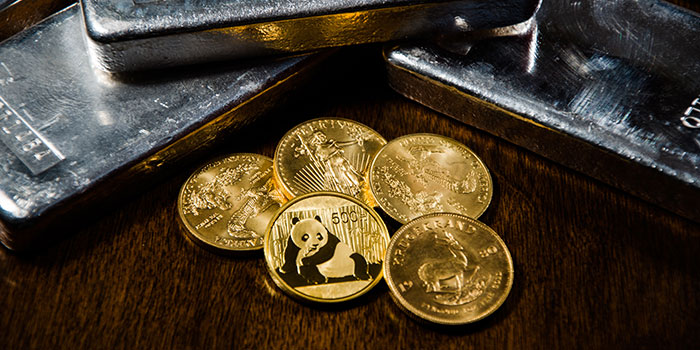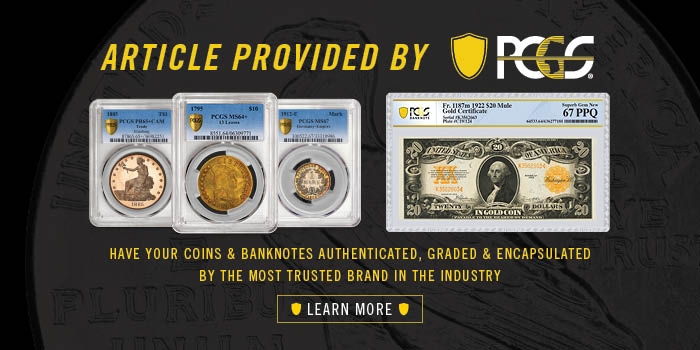
By Jay Turner for PCGS ……
There is a significant share of numismatics and the coin market that is driven by one factor: the metallic value of the coin. These coins that follow the fluctuation of metals markets are considered bullion coins.
Bullion coins can consist of precious metals such as gold, silver, platinum, and palladium. Bullion coins can consist of two categories, including coins issued for circulation when the gold or silver was used as legal tender and coins issued by governments or institutions as a form of non-circulating legal tender (NCLT). In both of these instances, coins have a set weight and fineness set with a denomination.
As long as goods and services have traded based on a monetary unit, metals – typically gold and silver – have been the bases of that exchange. With the advent of non-precious-metal (or base metal) currency, there has been a desire by governments, institutions, and individuals to protect and hedge their wealth in an asset that is and has always been a stable means of exchange – precious metals. Today, just as it has always been, gold and silver have value and are a form of currency that is traded and accepted worldwide.
Starting in the 1930s, governments around the world started removing their currency from the gold standard in order to have more control over the amount that could be issued into circulation. Prior to this, many governments around the world had minted circulation-issue coinage since gold was money, and their money was tied to gold. After leaving the gold standard, many countries continued to issue gold coins but only as bullion, not for circulation.
Soon after the switch from gold-based currency to a silver-backed or fiat (backed only by the government with no intrinsic value) currency, the value of gold significantly increased, and gold coins were now worth many times their face value on the merits of their intrinsic metal value. Thus, gold coinage was quickly removed from circulation by both individuals and the governments.
 This trend continued into the 1960s and ’70s when countries left the silver standard and silver disappeared from circulation, though some countries would reissue silver coins as late as the ’90s into circulation. Gold and silver coins issued for circulation prior to switching standards still have a set fineness and weight on which an exact value can be determined and many easy trades made based on this. These coins are most popular with individual collectors and investors who use them for investment purposes.
This trend continued into the 1960s and ’70s when countries left the silver standard and silver disappeared from circulation, though some countries would reissue silver coins as late as the ’90s into circulation. Gold and silver coins issued for circulation prior to switching standards still have a set fineness and weight on which an exact value can be determined and many easy trades made based on this. These coins are most popular with individual collectors and investors who use them for investment purposes.
Starting the in 1960s, some countries began issuing coins for bullion purposes. These coins were sold for their bullion value with a (usually) small premium to people and institutions wanting to buy gold and silver. As demand for these bullion coins increased, more nations jumped aboard the bullion coin bandwagon. These coins feature a nominal denomination or face value. In most cases, the value of the metal within these coins far exceeds their face value, preventing issues where the coins are used as money in commerce, though in rare cases these coins are still used for that very purpose.
Precious metal coins minted by governments are trusted as bullion assets and, with a set fineness and weight, are often preferred to vintage gold and silver coins as their weight is typically set to one ounce or fractions or multiples of such. These NCLT coins are minted by many countries and in metals such as silver, gold, platinum, palladium, and, most recently, rhodium.
For many collectors and investors, bullion has been a force in the numismatic market place. While private bars and round do exist, if you are going to invest or hedge in precious metals, why not choose a precious metals vehicle such as legal-tender coins backed by government institutions? From the wide array of countries, historical issues, designs, weights, and finenesses to choose from, you can not only build a precious metal portfolio, but also a handsome collection you’ll be proud to own.
* * *






There are bullion coins that are issued very close to their face value?
Good article. The face value on Bullion confused me when I was younger.